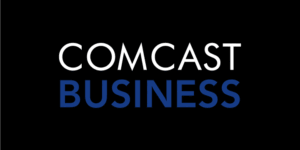
Used Golf Clubs: How to Spot a Good Deal
Introduction
Buying used golf clubs can be a fantastic way to save money while still getting high-quality equipment. However, spotting a good deal requires a bit of knowledge and attention to detail. First, it’s important to know what to look for in terms of the club’s condition. Check for any signs of excessive wear, such as dents, rust, or worn grips. These can affect the club’s performance and may indicate that it hasn’t been well-maintained.
Next, consider the brand and model of the clubs. Some brands hold their value better and are known for their durability. Researching the original price and comparing it to the asking price can help you determine if you’re getting a fair deal. Additionally, knowing your own specifications, such as the right shaft flex and club length, is crucial to ensure the clubs will suit your game.
Finally, buying from reputable sources, whether online or in-person, can provide peace of mind. Look for sellers with good reviews and clear return policies. By taking these steps, you can confidently navigate the market for used golf clubs and find equipment that offers great value for your money.
Top Tips for Finding the Best Deals on Used Golf Clubs
Finding the best deals on used golf clubs can be a game-changer for your wallet and your game. First, always start by researching reputable sellers, whether online or in-store. Websites like 2ndSwing and Global Golf are known for their quality and customer service. When shopping, pay close attention to the condition of the clubs. Check for any signs of wear, especially on the grips and shafts, as these can affect performance. It’s also wise to know your specifications, such as the line angle, length, and shaft flex, to ensure the clubs suit your playing style. Don’t hesitate to ask questions about the club’s history or request additional photos if buying online. Another tip is to look for seasonal sales or trade-in programs, which can offer significant savings. Lastly, consider getting the clubs professionally fitted, even if they are used, to maximize your performance on the course. By following these tips, you can find high-quality used golf clubs that fit your budget and help improve your game.
How to Evaluate the Condition of Used Golf Clubs
Evaluating the condition of used golf clubs is crucial to ensure you’re getting good value for your money. Start by examining the clubhead for any signs of damage or excessive wear. Look closely at the grooves on the clubface; worn grooves can affect your ball control and spin. Next, check the shaft for any signs of rust, cracks, or bends, as these can significantly impact the club’s performance. The grip is another important area to inspect. Make sure it’s not too worn out or slippery, as a good grip is essential for maintaining control over your swing. If possible, take a few swings with the club to see how it feels in your hands. Additionally, consider the club’s overall age and brand reputation, as some brands are known for their durability. Finally, don’t hesitate to ask the seller about the club’s history and any previous repairs or modifications. By carefully evaluating these aspects, you can make a more informed decision and find a used golf club that enhances your game without breaking the bank.
The Ultimate Guide to Scoring Bargains on Used Golf Clubs
Scoring bargains on used golf clubs can be a rewarding experience if you know where to look and what to consider. Start by researching reputable sellers, both online and in-store. Websites like Global Golf and 2ndSwing are known for their quality and customer service. When browsing, pay close attention to the condition of the clubs. Check for any signs of wear on the grips, shafts, and clubheads, as these can affect performance. Knowing your specifications, such as shaft flex, length, and line angle, is crucial to ensure the clubs suit your playing style. Don’t hesitate to ask the seller questions about the club’s history or request additional photos if buying online. Look out for seasonal sales or trade-in programs, which can offer significant savings. Additionally, consider getting the clubs professionally fitted, even if they are used, to maximize your performance on the course. By following these tips, you can find high-quality used golf clubs that fit your budget and help improve your game.
What to Look for When Buying Used Golf Clubs
When buying used golf clubs, there are several key factors to consider to ensure you get the best value for your money. Start by examining the clubhead for any signs of damage or excessive wear, especially on the grooves, as these can affect your ball control and spin. Next, check the shaft for any signs of rust, cracks, or bends, as these can significantly impact the club’s performance. The grip is another important area to inspect; make sure it’s not too worn out or slippery, as a good grip is essential for maintaining control over your swing. It’s also wise to know your specifications, such as shaft flex, length, and line angle, to ensure the clubs suit your playing style. If possible, take a few swings with the club to see how it feels in your hands. Additionally, consider the club’s overall age and brand reputation, as some brands are known for their durability1. Finally, don’t hesitate to ask the seller about the club’s history and any previous repairs or modifications. By carefully evaluating these aspects, you can make a more informed decision and find a used golf club that enhances your game without breaking the bank.
How to Avoid Common Pitfalls When Purchasing Used Golf Clubs
When buying used golf clubs, it’s easy to get caught up in the excitement of a good deal, but there are a few common pitfalls to watch out for. First, always check the club’s specifications, such as length, lie angle, and shaft flex, to ensure they match your needs.If this is unclear to you, one should seek for an advice from a specialist.Next, inspect the clubs for any signs of damage or excessive wear, especially on the shafts and grips. Bent or rusted steel shafts and cracked graphite shafts are red flags. Grips should be in good condition or factored into your budget for replacement. Additionally, be cautious of mismatched components, like ferrules that don’t match, as this could indicate past repairs. It’s also wise to buy from reputable sellers or trusted sources to avoid counterfeit or poorly maintained clubs. Finally, consider the age and technology of the clubs; older models might lack the advancements found in newer ones, affecting your game. By taking these steps, you can avoid common mistakes and find used golf clubs that enhance your performance on the course.
Insider Secrets to Finding Quality Used Golf Clubs
Finding quality used golf clubs can be a game-changer for your wallet and your game. Start by knowing your specifications, such as shaft flex, length, and lie angle, to ensure the clubs fit your swing. Always inspect the clubs for any signs of damage, like bent shafts or worn grips, as these can affect performance and add to your costs. Look for reputable sellers, whether online or at local shops, to avoid counterfeit or poorly maintained clubs. Websites like GlobalGolf.com and trusted local pro shops are good places to start. Pay attention to the club’s components: mismatched ferrules or grips can indicate past repairs, which might not always be a bad thing but are worth asking about. Also, consider the age and technology of the clubs; newer models often have advancements that can benefit your game, much like finding the perfect Christmas gifts that enhance your skills and enjoyment on the course. Finally, don’t hesitate to ask for a trial period or return policy to ensure the clubs are a good fit for you. By following these insider tips, you can confidently purchase used golf clubs that enhance your performance without breaking the bank.
How to Test Used Golf Clubs Before Making a Purchase
Testing used golf clubs before buying them is crucial to ensure they suit your game and are in good condition. Start by checking the club’s overall appearance. Look for any signs of damage, such as dents, rust, or excessive wear on the clubface and shaft. Next, examine the grips; they should be in good condition or factored into your budget for replacement. If possible, take the clubs to a driving range or a simulator to test their performance. Pay attention to how they feel during your swing and whether they match your desired specifications, like shaft flex and length. It’s also helpful to hit a variety of shots to see how the clubs perform in different situations. Don’t hesitate to ask the seller about the club’s history, including how often they were used and any repairs made. Finally, consider the club’s age and technology; newer models might offer better performance features. By thoroughly testing used golf clubs, you can make an informed decision and find clubs that enhance your game without any unpleasant surprises.
What are the best brands for used golf clubs?
When looking for quality used golf clubs, several brands stand out for their performance and reliability Callaway is a popular choice, known for its forgiving and distance-enhancing clubs Taylor Made is another top brand, offering clubs that are well-regarded for their innovative technology and consistency Ping is also highly recommended, especially for its forgiving and accurate clubs. Other notable brands include Titleist, known for its precision and feel, and Cleveland, which is famous for its wedges.
These brands are often available through reputable sellers like Global Golf, 2nd Swing Golf, and Rock Bottom Golf. By choosing clubs from these trusted brands, you can find high-quality used golf clubs that will enhance your game without breaking the bank.
Conclusion
In conclusion, spotting a good deal on used golf clubs requires a combination of knowledge, careful inspection, and strategic shopping. First, understand your own specifications, such as shaft flex, length, and lie angle, to ensure the clubs will suit your game. Always inspect key components like the ferrules, shafts, and grips for any signs of damage or excessive wear. Opt for clubs with adjustable features when possible, as they offer more flexibility and can be fine-tuned to your needs. Finally, buy from reputable sellers to avoid potential pitfalls and ensure you’re getting quality equipment. By following these guidelines, you can find high-quality used golf clubs that enhance your performance without breaking the bank
FAQ’s
1. What should I look for when inspecting used golf clubs?
When buying used golf clubs, start by inspecting the clubhead, shaft, and grip for signs of wear and damage. Look for dents, rust, or worn grips that can affect performance. Make sure the grooves on the clubface are intact, as worn grooves can reduce ball control and spin. Checking these elements will help ensure the clubs are in good condition.
2. How can I tell if I’m getting a fair price on used golf clubs?
To determine if the price is fair, research the original price of the clubs and compare it to the asking price. Consider the brand and model, as some hold their value better than others. Websites like Global Golf and 2ndSwing often list prices for comparison, making it easier to spot a good deal.
3. Are there specific brands that offer better value when buying used golf clubs?
Yes, some brands are known for their durability and performance, making them great options when buying used. Brands like Callaway, Taylor Made, Ping, and Titleist are highly regarded for their quality. These clubs are often well-maintained and can provide long-term value, even when bought second-hand.
4. Where should I buy used golf clubs from?
It’s best to buy from reputable sellers, whether online or in-store. Websites like 2ndSwing, Global Golf, and Rock Bottom Golf are known for their quality and customer service. If buying in person, ensure the seller has a good reputation and a clear return policy to avoid any issues with the clubs.
5. How can I avoid common mistakes when buying used golf clubs?
To avoid common pitfalls, always check the club’s specifications, such as shaft flex, length, and lie angle, to match your playing style. Be cautious of mismatched components or signs of damage like bent shafts or worn grips. Also, buy from reputable sellers to reduce the risk of getting counterfeit or poorly maintained clubs.






